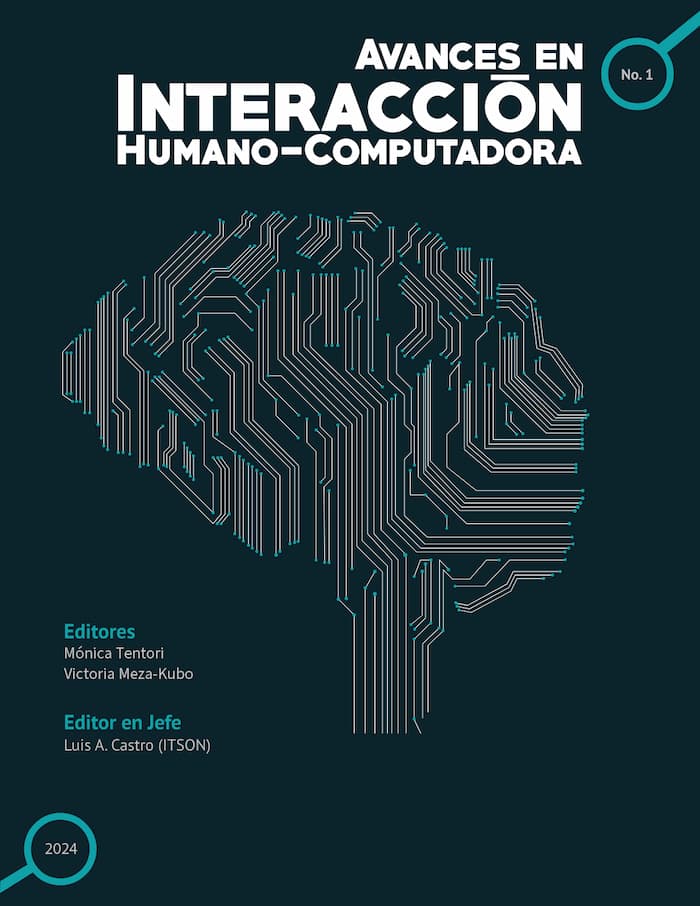Evaluation of the Usability, Functionality, and Content of Virtual Reality Environments with Intelligent Agents for the Treatment of Generalized Anxiety
DOI:
https://doi.org/10.47756/aihc.y9i1.179Keywords:
Behavior Trees, Interactive Environments, Intelligent Agent, Virtual Interaction, Generalized AnxietyAbstract
Humans interpret everyday events to understand the social world, where communication and emotions play critical roles. Generalized anxiety disorder impairs emotional interpretation and social interaction, significantly affecting the lives of those who experience it. Virtual reality (VR) has been studied as a therapeutic tool to address this cognitive deficit. This study evaluates the usability, functionality, and content of immersive virtual reality environments designed with Non-Playable Characters (NPCs) to assess anxiety in individuals with generalized anxiety disorder. Three scenarios were developed: a café, an airport, and an office, each featuring different NPCs—a human barista, a minotaur officer, and a masked lawyer. Through Alpha and Beta testing, elements such as audio clarity, environment intuitiveness, and NPC authority perception were evaluated. The results indicate that task familiarity enhances usability, with the café being the highest-rated environment. However, limitations were observed in the airport environment due to audio interference and in the office due to low intuitiveness. These findings highlight the importance of user-centered design to optimize the effectiveness of virtual environments in therapeutic applications.
Downloads
References
Antaki, C., & Condor, S. (2000). Cognición social y discurso. El discurso como estructura y proceso, 453–489. Barcelona: Gedisa.
Bados, A. (2009). Fobia social, naturaleza, evolución y tratamiento. barcelona-españa: universidad de Barcelona.
Bergolla, Y. C. (2009). Agentes inteligentes. Aplicación a la realidad virtual. Revista Cubana de Ciencias Informáticas, 3(1-2).
Brito Castillo, H. A. (2020). Efecto de la rehabilitación sensoriomotriz basada en modelo de realidad virtual inmersiva en deterioro cognitivo, salud mental y capacidad motriz del adulto mayor.
Ekman, P. (2017). El rostro de las emociones. RBA Libros.
Espejo-Saavedra, A. D. (2020). Diseño y desarrollo de personajes con presencia social en videojuegos de realidad virtual (Tesis doctoral, Universidad Complutense de Madrid, Facultad de Informática).
Labbe T., Ciampi Diaz, E., Venegas Bustos, J., Uribe San Martín, R., & Cárcamo Rodríguez, C. (2019). Cognición Social: Conceptos y Bases Neurales. Revista chilena de neuro-psiquiatría, 57(4), 365-376. DOI: https://doi.org/10.4067/S0717-92272019000400365
López, G. C., Figueroa, R. D., Giglioli, I. A. C., Martínez, F. R., Ribelles, L. A. C., & Raya, M. A. (2022). Evaluación ecológica mediante Realidad Virtual de las necesidades psicológicas básicas. Hamut´ ay, 9(1), 1. DOI: https://doi.org/10.21503/hamu.v9i1.2373
Marcotte, R., & Hamilton, H. J. (2017). Behavior Trees for Modelling Artificial Intelligence in Games: A Tutorial. The Computer Games Journal, 6(3), 171–184. DOI: https://doi.org/10.1007/s40869-017-0040-9
Mohd, C. K. N. C. K., & Shahbodin, F. (2015). Personalized Learning Environment: Alpha Testing, Beta Testing & User Acceptance Test. Procedia - Social and Behavioral Sciences, 195, 837–843. https://doi.org/19.1016/j.sbspro.2015.06.319 DOI: https://doi.org/10.1016/j.sbspro.2015.06.319
Morocho, J. D. P. H., & Valencia, J. E. T. (2020). Variables y dimensiones aplicadas a la percepción en la calidad del servicio de cajeros automáticos. Revista Científica Ciencia y Tecnología, 20(28). DOI: https://doi.org/10.47189/rcct.v20i28.401
Pérez, E., & Aragón Pérez, H., Pérez-hernández, J., Lopez, L., & Caballero, C. (2013). La comunicación no verbal. In Electronic Journal of Research in Educational Psychology (Vol. 10, p. 226).
Pérez, H., Pérez-Hernández, J., Lopez, L., & Caballero, C. (2013). La comunicación no verbal. In Electronic journal of research in educational psychology (Vol. 10, p. 226).
Pérez, J., Aguilar, J., & Dapena, E. (2020). MIHR: A human-robot interaction model. IEEE Latin America Transactions, 18(09), 1521-1529. DOI: https://doi.org/10.1109/TLA.2020.9381793
Puchol, L. (2008). Hablar en público: nuevas técnicas y recursos para influir a una audiencia en cualquier circunstancia. Ediciones Diaz de Santos.
Sapio, F. (2019). Hands-on artificial intelligence with Unreal Engine: Everything you want to know about game AI using blueprints or C++. Packt Publishing Ltd.
Seaborn, K., Sekiguchi, T., Tokunaga, S., Miyake, N. P., & Otake-Matsuura, M. (2023). Voice over body? Older adults’ reactions to robot and voice assistant facilitators of group conversation. International Journal of Social Robotics, 15(2), 143-163. DOI: https://doi.org/10.1007/s12369-022-00925-7
Urquidi Martín, A. C., Calabor Prieto, M. S., & Tamarit Aznar, C. (2019). Entornos virtuales de aprendizaje: modelo ampliado de aceptación de la tecnología. Revista electrónica de investigación educativa, 21. DOI: https://doi.org/10.24320/redie.2019.21.e22.1866
Warpefelt, H. (2016). The Non-Player Character: Exploring the believability of NPC presentation and behavior (Doctoral dissertation, Stockholm University).
Downloads
Published
How to Cite
Issue
Section
License

This work is licensed under a Creative Commons Attribution-NonCommercial-NoDerivatives 4.0 International License.
AMexIHC make every effort to ensure the accuracy and rigour of all the information (the "Content") contained in out publications. However, AMexIHC and our representatives make no representations or warranties whatsoever as to the accuracy, completeness, or suitability for any purpose of the Content. Any opinions and views expressed in this publication are the opinions and views of the authors, and are not the views of or endorsed by AMexIHC. The accuracy of the Content should not be relied upon and should be independently verified with primary sources of information.


